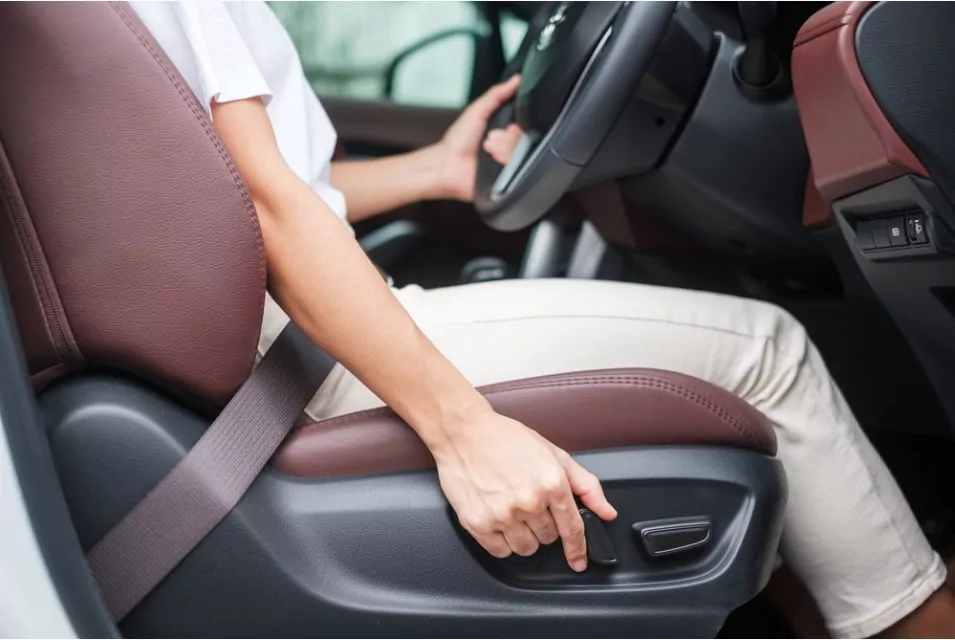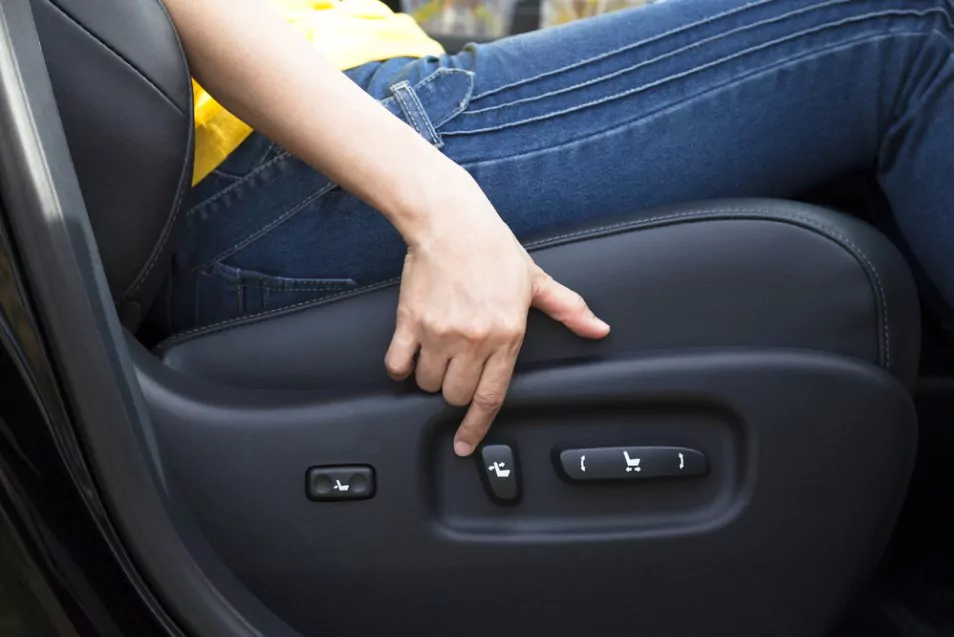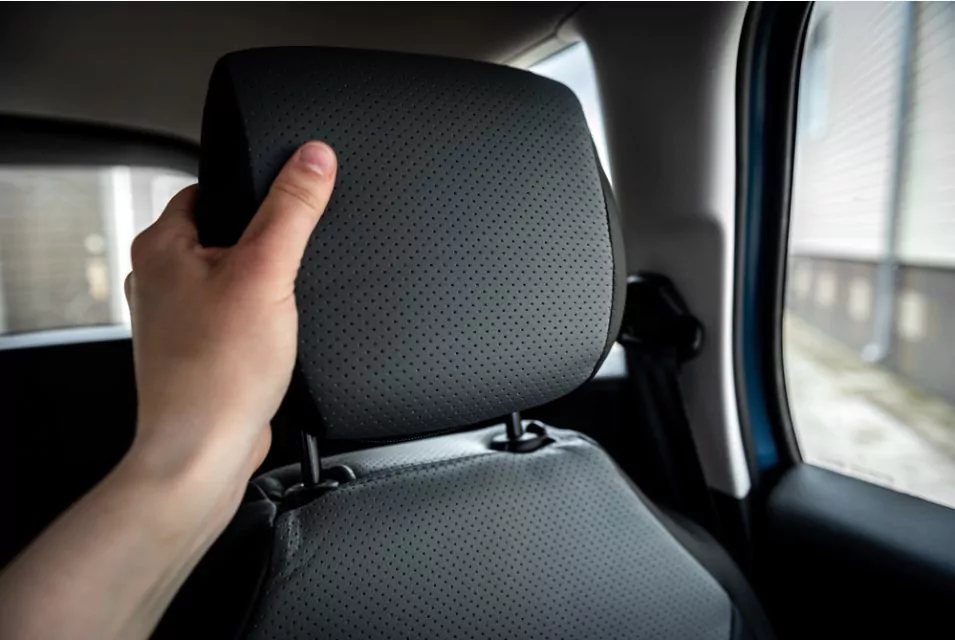The Proper Way to Adjust Your Seat Position for Safe Driving

Driving is an essential part of our daily life, and ensuring that we do it safely and comfortably is important. One of the key factors that can affect our driving experience is our seating position. When our seating position is incorrect, it can cause discomfort, fatigue, and even contribute to accidents. This blog will discuss the importance of adjusting seating to the proper position while driving and provide practical tips to help you achieve a comfortable and safe driving experience.
1 The Importance of Proper Seating Position
A proper seating position is essential for several reasons:
Comfort: Long drives can cause discomfort and strain your back, neck, and legs. Adjusting your seat to the correct position can help minimise this strain, leading to a more enjoyable driving experience.
Visibility: A proper seating position allows you to have a clear view of the road, as well as your vehicle’s mirrors and dashboard instruments.
Safety: Proper seat positioning helps ensure you can reach and operate your vehicle’s controls comfortably and effectively. In addition, the correct seating position helps to optimise the protection provided by your vehicle’s safety features, such as seat belts and airbags.
Fatigue prevention: An uncomfortable seating position can lead to driver fatigue, which increases the risk of accidents. Maintaining a proper seating position can help keep you alert and focused on the road.
2 The Different Components of Seat Adjustment
There are several components to consider when adjusting your seat:
- Seat height
- Seat distance
- Seat backrest angle
- Lumbar support
- Headrest position
- Steering wheel position
- Mirror positions
3 Step-by-Step Guide to Adjusting Your Seat
Adjust the Seat Height

Adjusting the seat height is the first step to getting the right seating position while driving. The seat should be adjusted so that your hips are level with or slightly higher than your knees. This position ensures that you have a clear view of the road and that you can easily reach the pedals and steering wheel. Most cars have a lever or button to adjust the seat height.
Adjust the Seat Backrest

Once you have adjusted the seat height, the next step is to adjust the backrest. The backrest should be adjusted so that it provides support to your lower back. This support will help you maintain the correct posture while driving, reducing the risk of fatigue and discomfort. Adjust the backrest so that it is almost upright but still allows you to maintain a slight bend in your knees.
Adjust the Seat Position
The next step is to adjust the seat position. The seat should be adjusted so you can comfortably reach the pedals and steering wheel without stretching or leaning forward. Adjust the seat so that there is a slight bend in your knees when your foot is on the brake pedal. Ensure that you have a clear view of the road and that the steering wheel is within easy reach.
Adjust the Steering Wheel

Adjust the steering wheel so that it is at a comfortable angle and distance from your body. The steering wheel should be adjusted so that your arms are slightly bent and your hands are at the 10 and 2 o’clock positions. This position ensures that you have maximum control over the vehicle and that you can react quickly to sudden changes in traffic.
Adjust the Headrest

The headrest is an essential safety feature of the vehicle and should be adjusted correctly. Adjust the headrest so that it is at the same height as the top of your head. This position will help prevent whiplash in the event of an accident.
Adjust the Mirrors

Once you have adjusted your seating position, the next step is to adjust the mirrors. The side mirrors should be adjusted so that you can see the rear quarter panels of the vehicle. The rearview mirror should be adjusted so that you have a clear view of the rear window.
4 Factors Affecting Seating Position
Several factors can influence your seating position, including:
- Vehicle model and design
- Personal preferences and comfort
- Body size and shape
- Physical limitations or disabilities
- Presence of child seats or booster seats
Always consider these factors and make adjustments accordingly to ensure a comfortable and safe driving experience.
5 How to Identify and Fix Common Seating Issues
If you experience discomfort or difficulty while driving, it may be due to an improper seating position. Here are some common issues and how to fix them:
Difficulty reaching pedals: Move the seat forward or adjust the seat height to provide better access to the pedals.
Lower back pain: Adjust the lumbar support or use a lumbar cushion to provide additional support.
Neck strain: Ensure the headrest is properly positioned to support your head and neck.
Arm or shoulder discomfort: Adjust the seat backrest angle and steering wheel position to reduce strain on your arms and shoulders.
Seat Adjustment Tips for Different Body Types
Different body types may require specific adjustments to achieve a proper seating position:
Tall drivers: Increase seat height and move the seat back to allow for adequate legroom. Adjust the steering wheel and headrest accordingly.
Short drivers: Raise the seat height to improve visibility and move the seat forward for better pedal access. Adjust the steering wheel and headrest as needed.
Large drivers: Ensure there is enough space between your body and the steering wheel for comfort and manoeuvrability. Adjust the seat backrest and lumbar support to provide adequate support.
6 Making Adjustments for Pregnant Drivers
- Pregnant drivers may need to make additional adjustments to ensure comfort and safety:
- Move the seat back to create more space between your abdomen and the steering wheel.
- Adjust the seat belt to fit comfortably under the bump, ensuring it lies across the hips and not the belly.
- Consider using a seat belt extender if needed.
7 Wrapping Up
It is important to note that the correct seating position may vary from person to person. Factors such as height, weight, and body shape can affect how you should adjust your seating position. Therefore, it is recommended that you experiment with different seating positions until you find one that is most comfortable and provides the best control over the vehicle. It is also important to remember to take regular breaks when driving long distances. Taking breaks can help you stretch your muscles, increase circulation, and reduce the risk of accidents caused by driver fatigue.
By following these practical tips, you can achieve a comfortable and safe driving experience that will make your daily commute or road trips more enjoyable. If you want to make your car driving experience more joyful, it is always a good practice to have the best car air purifier installed in your car to keep your car fresh!
Community Q&A
About This Article
This article has been viewed 711 times.



